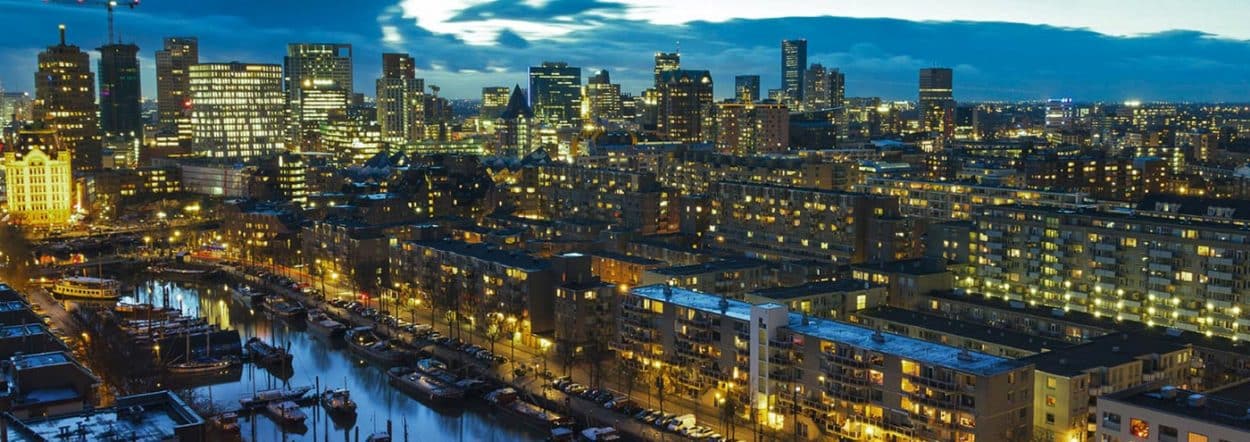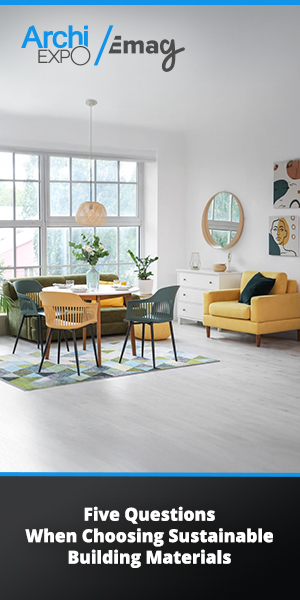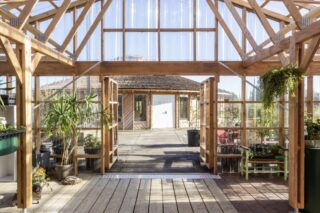Urban planners consider how to propose equilibrium between a city’s economic and energy savings, CO2 objectives and public lighting infrastructure. The goal is to reduce light pollution and enhance modern city life through high-quality lighting. Safer city streets reduce crime rates and make the city more enjoyable for citizens and visitors, which boosts the local economy.
Budget and carbon pollution remain some of the main concerns. “Outdoor lighting in the U.S. will consume enough energy to power 6 million homes this year, costing cities about $10 billion annually,” according to a statement in The White House Blog by Dan Utech, the deputy assistant to the president for energy and climate change. They’re now launching the Presidential Challenge for Advanced Outdoor Lighting, which acts as a support system for municipalities to accelerate the use of highly efficient outdoor lighting, cutting back on carbon pollution and cost.
The biggest challenge for urban planners is finding a future-proof solution that copes with rapid urbanization. Lighting companies are taking a similar path with intelligent systems. Denmark’s new platform, DOLL, develops LED lighting solutions and uses three scientific laboratories to improve their products. A more established company, Royal Philips Electronics, teamed up with Paradox Engineering SA in 2013, whose PE.AMI wireless network platform expertise helped create integrated technologies for network-connected street lighting management solutions.
Understanding the IntelligentCity Solution
Cities control, manage and maintain public lighting. Architects and urban planners are responsible for proposing lighting solutions that will make the city function more efficiently. Philips’ IntelligentCity concept has three elements: Philips’ CityTouch (lighting management platform), Intelligent luminaires (CityTouch-ready plug-and-play LED luminaires) and services (turnkey package to outsource tasks).
CityTouch consists of two main application programs: CityTouch LightPoint and CityTouch LightWave. LightPoint is a lighting asset-management system, a tool for data and maintenance management, while LightWave is a remote lighting management system, the control center for adjusting and monitoring public lighting in the city. LightWave communicates with the lighting system via public mobile communications networks.
Public lighting is then controlled through LightWave, allowing the controller to turn on and off or dim the lights in specific areas. Each light is adjusted individually, allowing safety and visibility improvement (when fully lit) or light pollution prevention and energy storage (when dim). Decision-making for managing the light tone will be based off the LightPoint, from its user interface, map-based visualizations, simple charts and diagrams. Such reports and analyses support decision-making with concrete data.
Reducing Carbon Footprint with Lighting Products
 In order for the CityTouch platform to function, intelligent luminaires wirelessly connect to the system. The city of Palencia (Spain), for example, needed to install affordable lighting. They selected 3,139 luminaires that ended up saving the city 2 billion euros and have a 75% energy savings guarantee, according to the Streetlight Guide European. The lights were connected to CityTouch control software with Starsense RF control nodes, a Telemanagement system. Watch the launching video to find out more about this product.
In order for the CityTouch platform to function, intelligent luminaires wirelessly connect to the system. The city of Palencia (Spain), for example, needed to install affordable lighting. They selected 3,139 luminaires that ended up saving the city 2 billion euros and have a 75% energy savings guarantee, according to the Streetlight Guide European. The lights were connected to CityTouch control software with Starsense RF control nodes, a Telemanagement system. Watch the launching video to find out more about this product.
Similarly, the Holbaek municipality in Denmark needed to revamp its street lighting in order to reduce energy consumption. Their urgent demand required a solution for all 69,000 residents, from the countryside to the town center. They installed 9,000 Copenhagen LED lanterns throughout the city, which communicate with CityTouch through a web interface so that each luminaire can be monitored and controlled individually and at all times.
A variety of intelligent luminaires exist so cities can choose the best style and makeup for the environment it will complement. The Luma, used in the Szczecin (Poland) project, uses Selenium LEDs and provides 60% energy-saving results. A new plug-and-play concept is seen in products such as the Iridium gen3 road luminaire that has a quick three-step installation process. This luminaire can be tilted to manage light direction and has a lifetime of up to 100,000 hours at L80F10 with four optical choices: distribution medium, wide, comfort and road wet.
L80F10, meaning that 80% of the light remains and that maximum 10% of the diodes in the luminaire do not meet the technical requirements.
Lighting that offers classy ambiance is the Metronomis LED. The choice of columns and variety of optics and effects allow architects and lighting designers to plan city centers, squares, residential areas and commercial and business centers. The polycarbonate transparent bowl selected for the optical cover gives it a stylish appeal.
Case Study: Szczecin, Poland Project
Currently, more than 408,000 people reside in the city, the seventh most visited city in Poland. Known as the “Floating Garden,” the city’s maritime activity plays a strong role in its economy, and this point factored into the decision-making process. It needed a light system and product that would accompany its stylish and ecological environment.
LUME REPORT : 2013 Street Lighting & Electrical Sustainability Report by The Royal Borough Windsor & Maidenhea
In September 2014, Szczecin moved from sodium lighting to LED. Exactly 4,985 Philips Luma luminaires were installed in the city streets, 1,888 of which are managed by CityTouch LightWave.
“This new white LED lighting significantly improves the quality of street lighting in our city,” explained Piotr Krzystek, President of Szczecin, in the video interview “Szczecin, First Polish City with IntelligentCity Connected Lighting.”
Szczecin is expected to reach a cost savings of 360,000 euros per year. Luma’s LED is one of the main reasons for this cost reduction. The Luma combines Optiflux optics technology, connected within a high reflecting frame that maximizes the light output ratio (up to 92%), with a flat housing design that allows efficient road illumination without upward light distribution. Its tilt aspect offers easy lighting direction to specific areas.
Statistics showed that energy and maintenance costs were also lowered thanks to the CityTouch software management platform. The software’s data collecting system replaces the manual labor of adding and importing information. Maintenance crews are contacted as soon as a fault occurs, so the city is always up-to-date with status information. Data collection and analysis are performed throughout the installation process and the lifespan of the system.
The Totally Connected Future Is Here
Cities around the globe are looking to apply tomorrow’s technology to today’s outdoor lighting solutions: Go further, go faster, but definitely go smarter. Advanced options are constantly in the works, such as Cisco and Sensity’s latest intelligent lighting platform. This ecosystem consists of applications such as smart lighting, digital kiosks, a development data portal and smart water innovation development.
“Cisco’s and Sensity’s intelligent lighting platform transforms each lighting fixture into a sensory node in a powerful, broadband wireless network, creating a light sensory network for municipalities,” stated in a press release from 9 June 2015. “The joint solution converts city lighting infrastructure into a distributed sensing platform to collect real-time data for smart city applications, such as smart parking, lighting, retail analytics, and public safety and security.”
“LEDs allow cities to also install a network of sensors that gathers data about traffic patterns, weather, parking spots and even terrorism,” said Hugh Martin, Chairman and CEO of Sensity Systems.
It’s no wonder more and more solutions are converting city lighting infrastructure, all hailing LED, into “smart” data systems. Hamburg, Germany, redirects traffic when ships come in or out of the port with the city’s lighting infrastructure, provided by Philips. This technology detects traffic jams and accidents, alerting all incidents to port management immediately; it also includes environmental sensors for air quality and motion sensors.
In an article in Lux, Hamburg is said to be one of the first to implement the “Internet is everything” smart city collaboration between the city of Hamburg and information technology company Cisco, which the two parties agreed to in April 2014.
Go further, go faster, but definitely go smarter.












